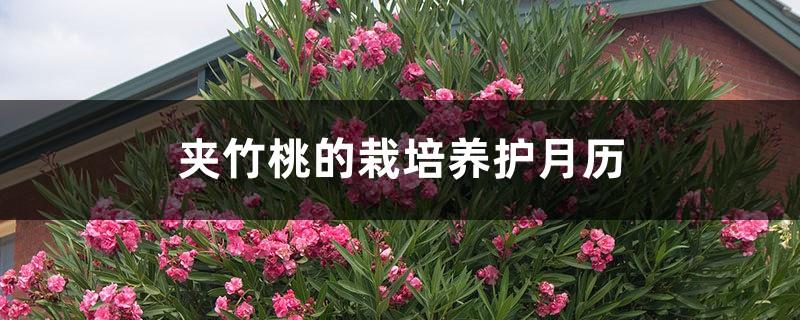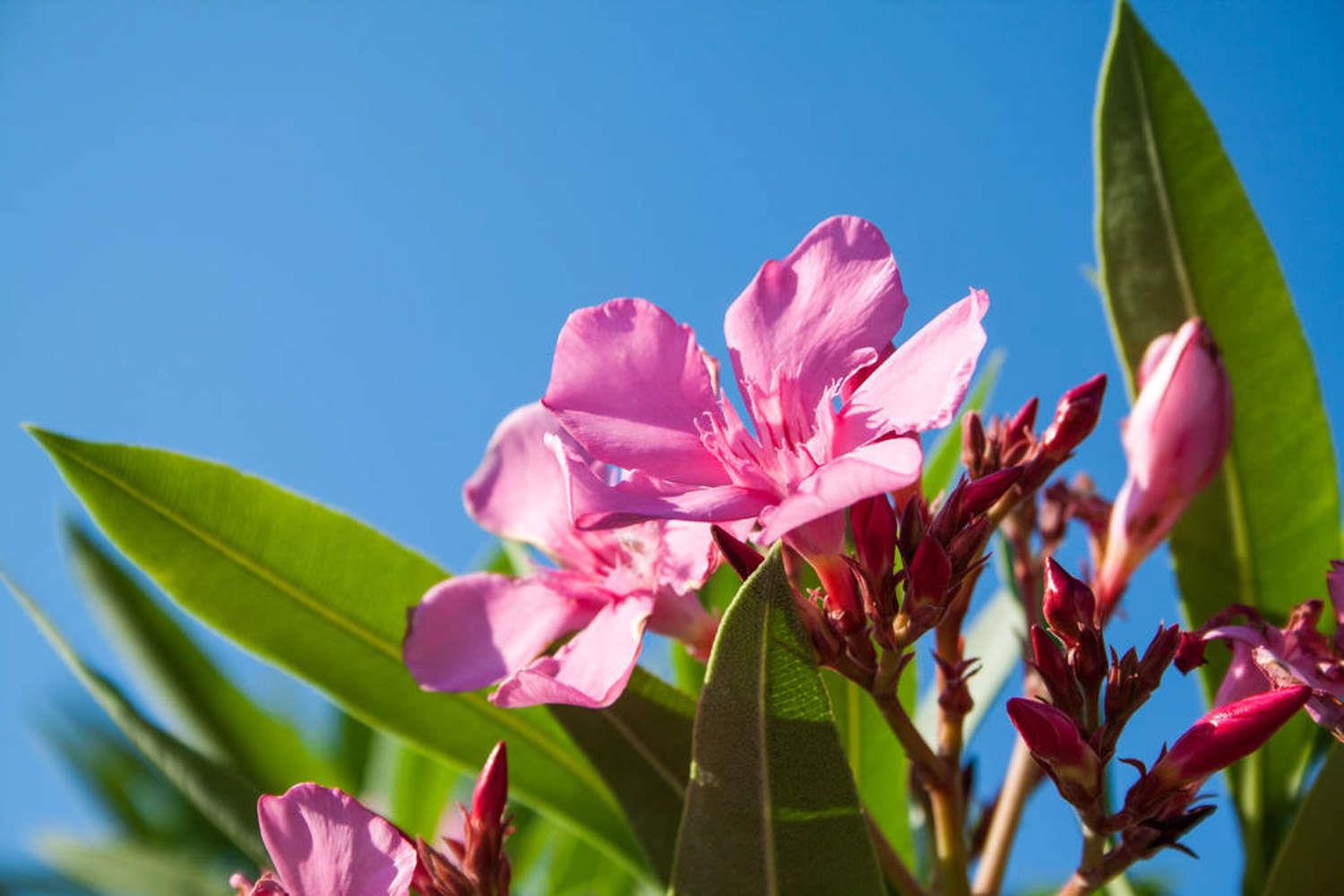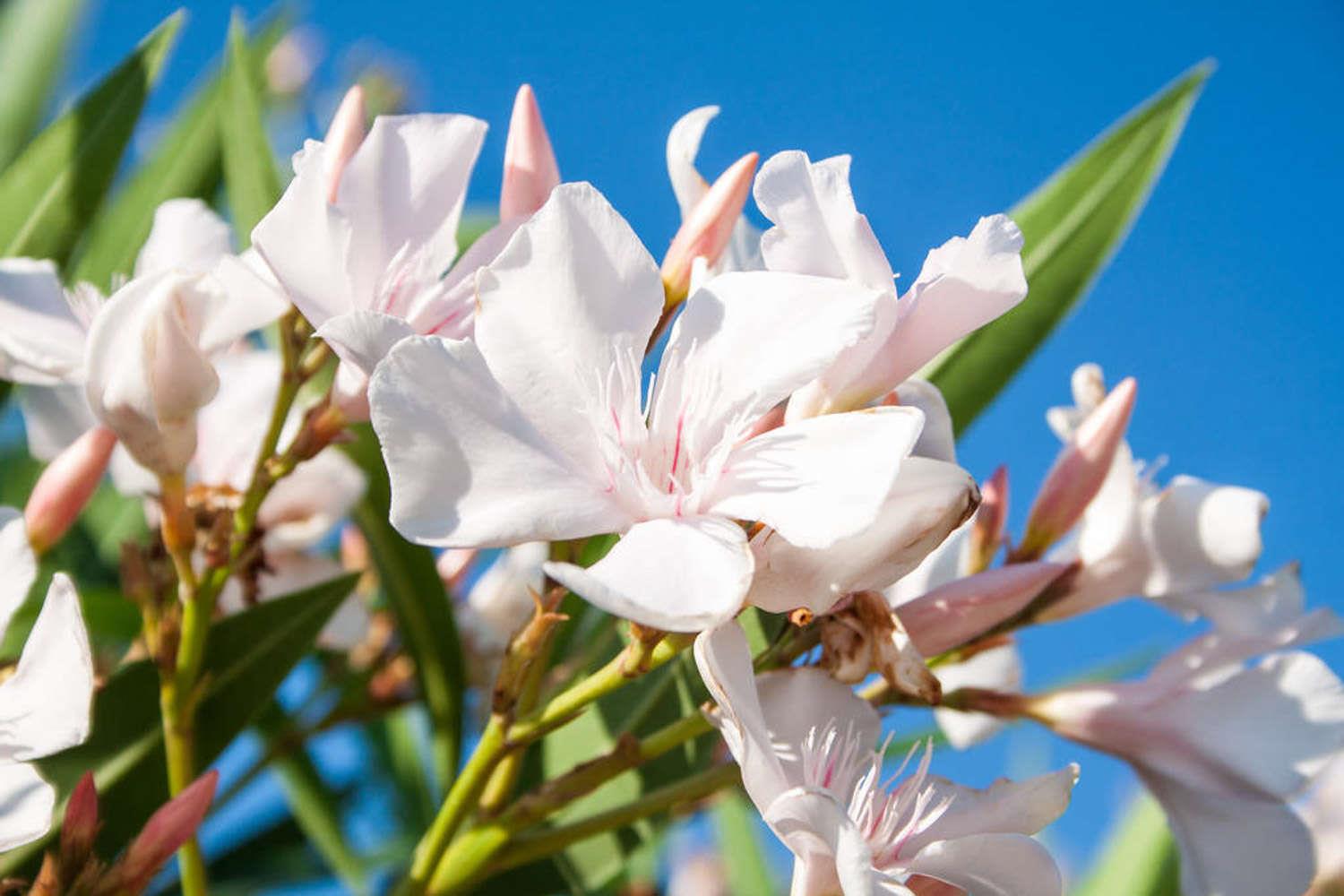Oleander Cultivation and Care Calendar
Last Update :2024.11.15
Article Catalog
Oleander is native to Iran, India and Afghanistan. It is an evergreen shrub and small tree that likes a warm and humid climate. It likes fat but is afraid of water accumulation. It has strong adaptability to soil, can tolerate alkali, and is suitable for sandy loam soil.

January
To prevent cold, branches should be bundled and supported to prevent them from being broken by snow. Snow should be removed promptly after snowfall.
February
Transplantation should be carried out in spring. Base fertilizer should be applied into the planting hole, and the first water after planting should be poured thoroughly. In other seasons, soil balls should be brought when transplanting, and the leaves should be appropriately pruned in summer to reduce leaf evaporation. In frozen areas, short cuts should be pruned before germination, and buds should be wiped to facilitate the tree's recovery. During shaping and pruning, generally 3 main branches are retained on the main trunk of each tree, and 3 branches are left on each branch, so that a "three branches and nine tops" crown will be formed in the future.
March
For propagation by cuttings, cut branches 15-20 cm long, tie every 20 branches into a bundle, immerse them in 20°C clear water, 1/3 of the way into the water, and frequently Change the water. After 7-10 days, when the branches in the water turn white and the top becomes sticky, take them out and insert them in the seedbed. It can also be soaked in water for 30-40 days. After taking root, it can be taken out and inserted into a sand bed. Roots can take place in about 1 month. Apply liquid fertilizer once to facilitate growth and flowering.

April
The plants begin to bloom until October. Pay attention to cultivating, weeding, and preventing pests and diseases.
May
Cut off flowers that have faded in time to avoid consuming nutrients.
June
Layering propagation is carried out in the rainy season. Plants that are more than 1 year old and have many branches are selected as female parents. Select current-year branches with a diameter of more than 0.8 cm, and the branches from the top are selected. Remove the leaves 33 cm from the tip, twist the skin, fold it into an "8" shape, and press it into the soil to a depth of about 10 cm. Cover the soil and compact it to prevent the branches from popping out of the soil after watering. After pressing, water once, and then Water when dry. It will take about 60 days for roots to separate.

July
Prevent water accumulation after rain, and promptly remove weeds and remaining flowers. Oleander has strong tillering ability. During the growth period, many sprouting tillers will grow from the base. In order to reduce nutrient consumption and maintain a beautiful appearance, they should be removed or cut off in time.
August
Same management as last month.
September
Same management as last month.
October
Same management as last month.
In November
Apply phosphorus and potassium fertilizer once after flowering to facilitate healthy growth.
December
Do a good job of cultivating soil to prevent cold, seedlings should be wrapped with grass to prevent frost, and tillering branches and overly dense branches should be pruned once. Control the moisture content and keep it on the dry side.

- END -
There are several types of money trees. Introduction to money tree varieties.

In general, the money tree refers to the Taiwanese money tree, but there are three...
Sunflowers not blooming

The failure of sunflowers to bloom is mostly caused by four reasons. The first is ...